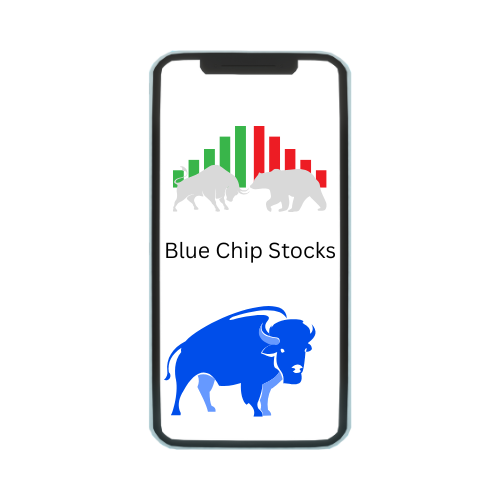Index-linked bonds, also known as inflation-linked bonds or I-bonds, are a type of investment instrument that differ from traditional bonds in how they adjust for inflation. These bonds are linked to a specific index, often the Consumer Price Index (CPI), which measures the changes in prices of a basket of goods and services over time. Unlike conventional bonds that offer fixed interest rates and principal amounts, the principal value of index-linked bonds adjusts periodically based on changes in the CPI. When inflation rises, the principal value of the bond increases, protecting investors against the erosion of purchasing power. Conversely, if there is deflation, the principal value decreases. This unique feature makes index-linked bonds an attractive option for investors seeking to hedge against inflation and preserve the real value of their investments over time.
What Is an Index-Linked Bond?
- An index-linked bond, also known as an inflation-linked bond or I-bond, is a type of bond where the principal and interest payments are linked to an index, typically the Consumer Price Index (CPI). Unlike traditional bonds that offer fixed interest rates and principal amounts, the value of an index-linked bond adjusts periodically based on changes in the index it is linked to.
- This adjustment ensures that the bondholder’s investment maintains its real purchasing power over time, protecting against inflation. When the CPI rises, the principal amount of the bond increases, and consequently, the interest payments also adjust. Conversely, if the CPI falls (deflation), the principal decreases accordingly. Index-linked bonds are considered a valuable tool for investors looking to hedge against inflation and diversify their investment portfolios with assets that respond differently to economic conditions.
How An Index-Linked Bond Works
Here’s a detailed explanation of how an index-linked bond works:
- Indexation to CPI: An index-linked bond’s principal and interest payments are linked to a specific index, typically the Consumer Price Index (CPI). This index measures the changes in the prices of a basket of goods and services over time.
- Adjustment Mechanism: Unlike traditional bonds that offer fixed payments, the principal value of an index-linked bond adjusts periodically based on changes in the CPI. When the CPI increases, the principal value of the bond increases, and vice versa if the CPI decreases.
- Inflation Protection: The primary purpose of index-linked bonds is to protect investors against inflation. As the CPI rises, the principal amount of the bond is adjusted upwards to maintain the real value of the investment in terms of purchasing power.
- Interest Payments: The interest payments on index-linked bonds are also adjusted based on the adjusted principal amount. This ensures that the income received by the bondholder keeps pace with inflation.
- Risk and Return: Index-linked bonds typically have a lower risk profile compared to other types of bonds because they adjust for inflation. However, they may offer lower nominal returns compared to traditional bonds with similar maturities.
- Government Issuance: Index-linked bonds are often issued by governments as a means of borrowing money while protecting against inflation. They are also issued by corporations and other entities seeking to hedge against inflation risks.
- Investor Considerations: Investors should consider factors such as the method of indexation, the issuer’s credit risk, and the prevailing inflation environment before investing in index-linked bonds.
Example Of An Index-Linked Bond
- An example of an index-linked bond would involve a bond whose principal and interest payments are linked to a specific index, such as the Consumer Price Index (CPI). Let’s say an investor purchases a $1,000 index-linked bond with a coupon rate of 2%, and it’s linked to the CPI.
- If the CPI increases by 2% in a year, the principal value of the bond would adjust upwards to $1,020. Consequently, the interest payments for the following year would be calculated based on this adjusted principal amount.
- This adjustment ensures that the bondholder’s investment keeps pace with inflation, maintaining its real value in terms of purchasing power. Conversely, if the CPI were to decrease, the principal amount would be adjusted downwards, reflecting the decrease in the cost of living. Index-linked bonds provide investors with a hedge against inflation, as they adjust both the principal and interest payments according to changes in the index, thereby protecting their investment from the effects of rising prices over time.
Why Use an Index-Linked Bond?
There are several reasons why investors might choose to use index-linked bonds:
- Protection Against Inflation: One of the primary reasons investors opt for index-linked bonds is their ability to hedge against inflation. Unlike traditional bonds, where the fixed interest rate can lose value in real terms during inflationary periods, index-linked bonds adjust their principal and interest payments according to changes in the Consumer Price Index (CPI). This adjustment helps to maintain the real value of the investment, protecting against the erosion of purchasing power caused by inflation.
- Diversification: Index-linked bonds offer diversification benefits to an investment portfolio. By including assets that respond differently to economic conditions, investors can reduce overall risk and potentially improve returns. Index-linked bonds typically have a low correlation with other asset classes, such as stocks and traditional bonds, making them a valuable addition for portfolio diversification.
- Stable Income: For income-focused investors, index-linked bonds can provide a stable and predictable income stream. The adjusted interest payments ensure that the bondholder’s income keeps pace with inflation, providing a reliable source of income in real terms.
- Preservation of Capital: Index-linked bonds help preserve the real value of capital over time. By adjusting the principal amount according to changes in the CPI, these bonds protect the initial investment against the effects of inflation, ensuring that the investor’s capital retains its purchasing power.
- Government and Institutional Issuers: Index-linked bonds are often issued by governments and large institutional entities, providing investors with an opportunity to invest in securities backed by these entities. This can offer additional security and stability to an investor’s portfolio.
Conclusion
In conclusion, index-linked bonds offer investors a unique and valuable investment opportunity in today’s financial landscape. These bonds provide a hedge against inflation by adjusting their principal and interest payments based on changes in the Consumer Price Index (CPI), ensuring that the real value of the investment is preserved over time. This feature makes them particularly attractive in environments where inflationary pressures are a concern. Additionally, index-linked bonds offer diversification benefits to investment portfolios, as they typically have a low correlation with other asset classes like stocks and traditional bonds. They provide investors with a stable income stream that keeps pace with inflation, making them a reliable option for income-focused investors. Moreover, these bonds are often issued by governments and large institutions, adding to their appeal due to the security and stability associated with such issuers. Overall, index-linked bonds are a valuable addition to an investment portfolio, offering protection against inflation, diversification benefits, stable income, and capital preservation.
Frequently Asked Questions
Inflation causes the principal value of index-linked bonds to increase, while deflation leads to a decrease in principal. This adjustment ensures that the real value of the investment remains relatively stable over time.
Investors should consider factors such as the bond’s indexation method, issuer credit risk, and the prevailing inflation environment before investing in index-linked bonds.
Yes, index-linked bonds are specifically designed to act as a hedge against inflation. Their principal and interest payments adjust according to inflation rates, protecting investors from purchasing power erosion.






